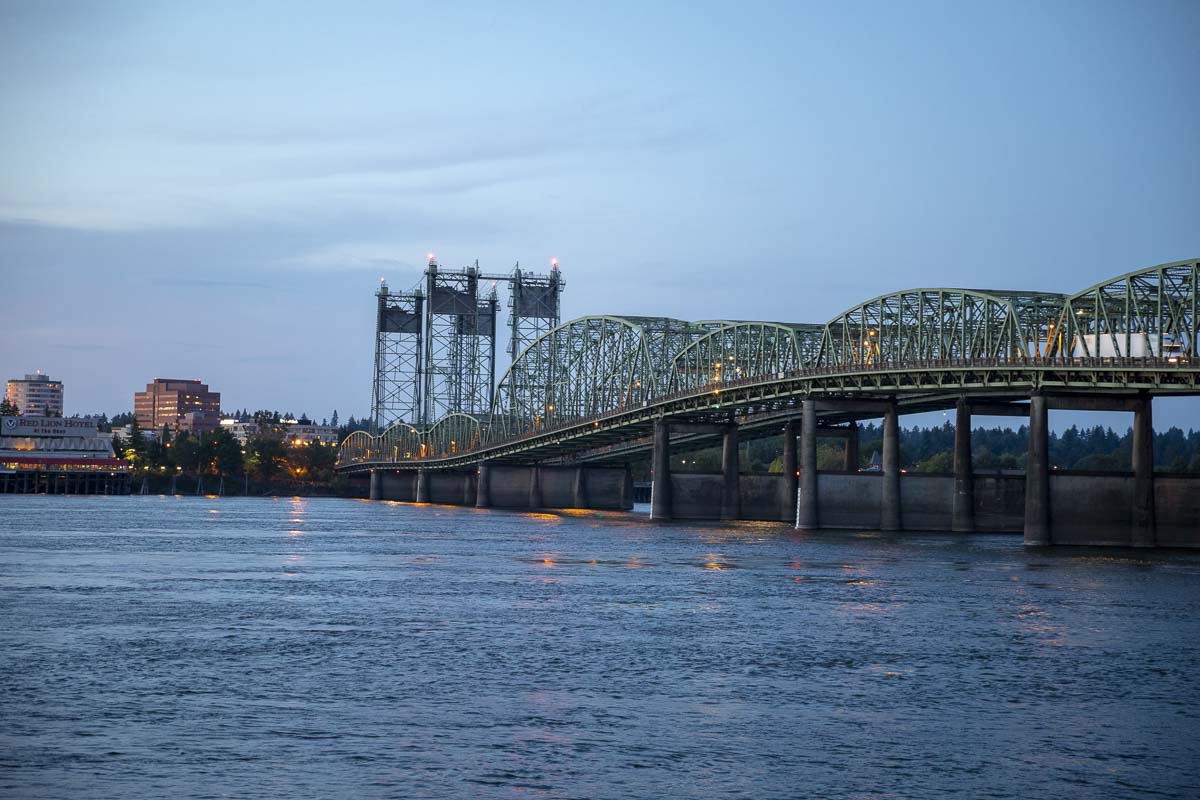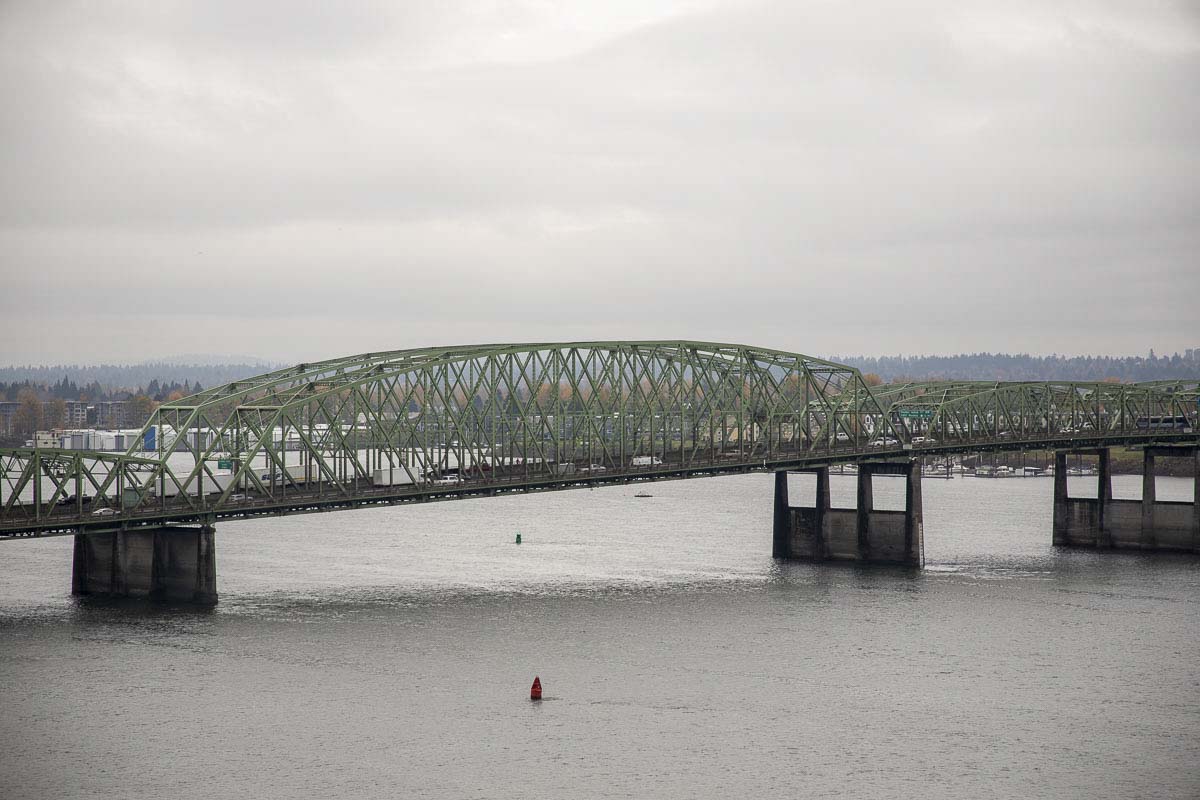The project now has a manager, with a consultant coming soon to begin analyzing traffic data and other impacts
VANCOUVER — To build a physical bridge, you must first construct a hundred metaphorical bridges. Between political affiliations, community groups, and countless individuals with an endless stream of feedback and ideas.
That goes double when you’re replacing a bridge along a federal highway that spans a river between two states.

Add in the backdrop of an expensive and controversial prior bridge replacement project that imploded under the weight of public outcry and political cold feet, and it’s easy to understand why elected officials and transportation agencies in Oregon and Washington are moving slowly and cautiously this time around.
The COVID-19 pandemic also slowed down the process somewhat, but the bi-state Interstate Bridge Replacement project has been moving ahead.
Last month, the program introduced its top administrator, Greg Johnson, an engineer with more than two decades of experience in building and managing major transportation projects.
The Joint Interim Committee on the Interstate 5 Bridge, referred to henceforth simply as the Bi-State Bridge Commission, has also resumed its regular meetings, albeit through the use of remote video conferencing.
Thursday’s 3-hour meeting focused largely on the groundwork for future discussions about what the commission sees as the visions and values of the project, as well as the purpose and needs statement for it.
The challenges of any new bridge are well documented through the Columbia River Crossing project, which was terminated in 2014 after the Oregon Legislature set aside $450 million, but the Washington Legislature balked at matching the funding.
Now, the failure of that project has put a ticking clock on this one. The states managed to get an extension from the federal government on $139 million in grants for planning the project. If the project isn’t substantially underway by 2023, Oregon will owe $93 million, and Washington must pay back $46 million.
While the governors of both states initially said the inclusion of light rail on any new bridge was a must, they have now softened their stance, insisting only that a dedicated guideway must be included for multi-modal transportation. What that will look like, exactly, is unclear, but Southwest Washington lawmakers and Vancouver officials have pushed for C-TRAN’s Bus Rapid Transit line to extend across the bridge and into North Portland.
While seismic safety risks may be the key concern for most people directly involved in this latest project, the vast majority of commuters have demanded a significant expansion of traffic capacity through the corridor, or a third river crossing as part of the package.
Legislators have made no promises, and officials with ODOT and WSDOT spent some time on Thursday warning that traffic reliability was much more likely than major congestion relief once a new bridge is built.
“Based on the existing corridor, constraints of finances and other things, the idea of completely resolving congestion during the peak of the peak time is not something that we think is viable to do,” said Carley Francis, the regional administrator for WSDOT.
“Predictability and reliability definitely need to be discussed,” responded Sen. Lynda Wilson, now co-chairing the commission, “because we would like to reduce the congestion, not just make it ‘I know it’s going to take me two hours to get over the bridge.’ That’s not going to be acceptable.”
“We have to understand what it would be like in the future with no improvement,” responded Francis. “And then we can apply these ideas about what improvements we have, and have the discussion about what level of improvement do people want, and can we provide that within the variety of constraints that are out there.”

Other legislators said they would like to hear more discussion about the use and implementation of future technologies, such as self-driving cars and buses, in potentially mitigating traffic congestion through the busy corridor.
“We have been working in the Vancouver area to build fiber into the roadways so that we can have better connectivity of data and help that data inform how we manage the roadways,” said Francis. “But that’s a long game kind of activity, because you do that work along with improvements.”
Oregon Sen. Lee Beyer said one of the weak points of the CRC was outdated traffic modeling, which he hoped would be something the project managers could improve on this time around.
“My perception is a lot of the traffic that’s going across there is going to and from the ports in the Puget Sound basin,” said Beyer, a Democrat from Springfield. “Those are really important ports for Oregon now that our international carriers are limited at the Port of Portland.”
Johnson, who will lead the Interstate Bridge Replacement Program (IBRP), noted that they hope to have a contractor on board soon, who will begin doing studies on traffic patterns, as well as surveying employers to determine where people are coming from, and where they go to each day.
Engaging the public
A key criticism of the CRC, and this latest process up to this point, said Sen. Ann Rivers (R-Vancouver), is a sense that public input is being allowed simply to “check off a box” in the process.
“Something that I’ve heard over and over is, they had all these events, but they didn’t really seem to implement any of the suggestions,” noted Rivers. “Some of them were fairly minor.”
“We don’t really want to hear from people, but we want to say that we asked,” agreed Oregon Sen. Lew Frederick. “So we don’t really want to know what they’re thinking of this.”
“People now really receive their information differently than they did 10 to 15 years ago,” noted Kimberly Pincheira, communications and external relations manager for the IBRP. “They expect to be engaged differently.”
Pincheria admitted that there was improvement to be made in responding to feedback, and letting people know why it is, or isn’t, being implemented in the plan as it moves forward.
“So that we’re being transparent on how those decisions are made,” she said, “but also accountable to the public where we’re closing that feedback loop.”
In the past, Johnson noted, a project might pass out some flyers to notify people about a public meeting, but it often didn’t result in much public engagement.
“If I’ve handed out 10,000 flyers, and only 10 people show up, does that 10,000 number make me successful?” he asked rhetorically. “The purpose of community engagement is to reach as many people as you can, and get their input on certain issues to feed the vision and values piece of the whole process.”
A project of this magnitude may not require much cajoling to get people to share their opinions. Even in the early stages of this reboot, dozens of people have signed up to testify at several of the Bi-state Bridge Commission meetings.
Still, there is a largely silent majority that Johnson said he is hoping to engage in this process.
“We’re not looking for a cookie cutter of what was done in another place because all communities are different and have different needs and different circumstances,” he said. “Some of the highest levels of trying to reach out to citizens is knocking on doors and handing them information, giving them tools to access meetings and provide input.”
“We have certainly received a lot of feedback and constructive criticism about the engagement efforts on the last project,” Pincheira added. “So, we recognize that there are a lot of opportunities for improvement.”
Next steps
Beyond beginning the re-engagement of stakeholder groups and community feedback, the project is now moving into the conceptual financial planning stage, which will look into potential sources of funding.
Much of that, said Francis, will inform the next steps of the plan, including the potential bridge design, as well as the highway system on either side of the river.
The CRC was projected to cost a total of nearly $3.1 billion for construction costs alone, though excluding light rail from the project would have saved nearly $850 million. Administrators have cautioned that federal funding which was available at that time may be more difficult to come by this time around.
Much of the funding is likely to come in the implementation of tolling, which was forecast to raise between $900 million and $1.3 billion for the CRC. It’s a plan that is sure to sit poorly with the estimated 27 percent of Clark County’s labor force who commute into Oregon each day for work.
Still, the project has a relatively long road ahead of it yet.
Francis said the goal is to have a conceptual outline for funding sources by the end of this year, with the arduous environmental review process set to begin next Summer. If everything went just right, construction might begin by the Summer of 2025.




